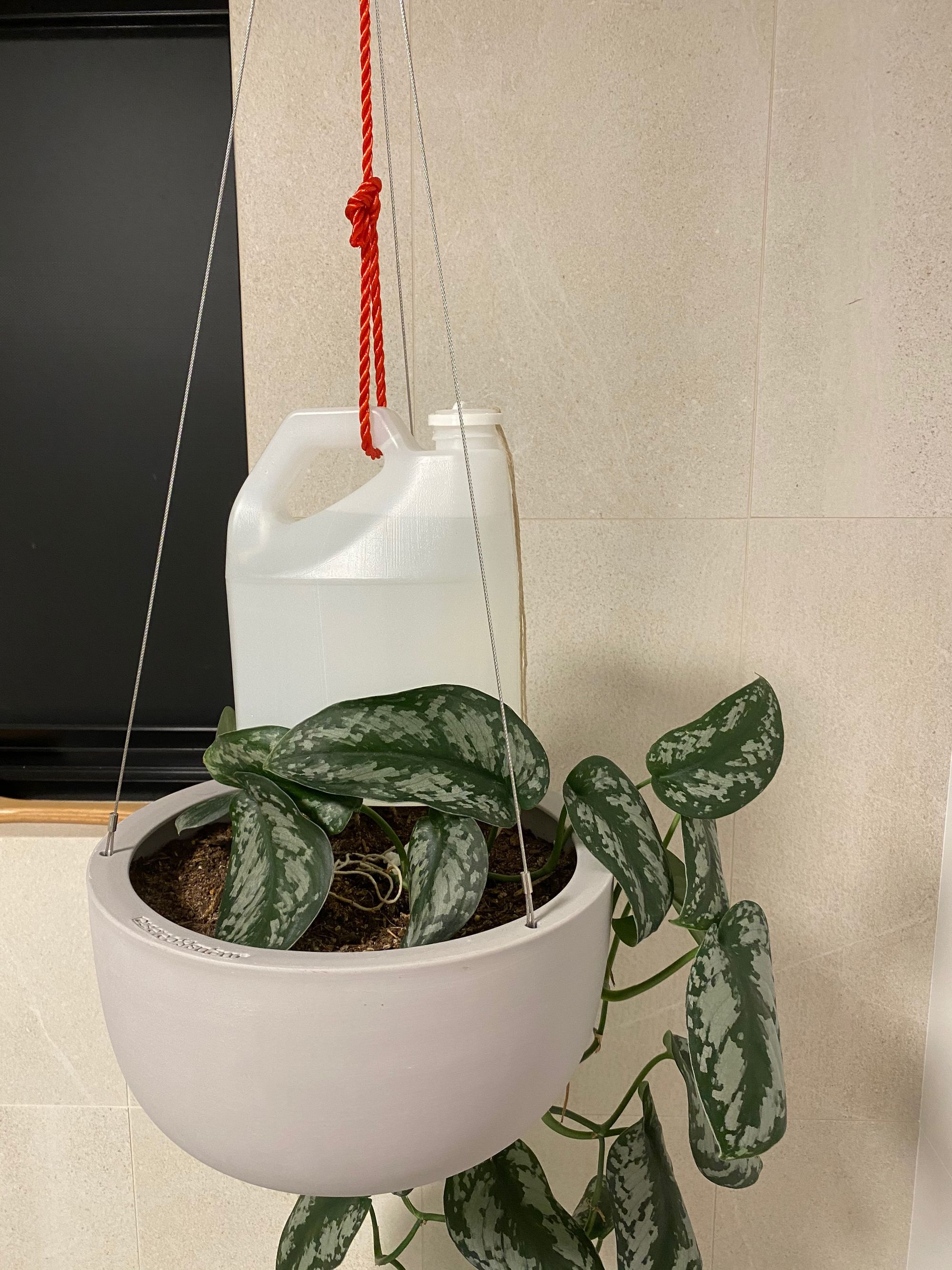Wick Watering Indoor Plants
Ever been on holiday and worried about watering indoor plants? Obviously self-watering pots would be first prize. Second prize is probably this wick watering trick - it's easy and sure beats dead plants!

| Status | Operational |
| Platform | Non-tech |
| Budget | $1 |
| Date Completed | December 2019 |
Summary of operation
Ever been on holiday and worried about watering indoor plants?
Obviously self-watering pots would be first prize. But they can be expensive and usually not the best looking.
Second prize is probably this wick watering trick - it's easy and sure beats dead plants!
Basically water travels along the wick (cord) to maintain a relatively consistent moisture level in the soil. It should actually flow less once the soil moisture saturation is reached.
Parts used
- Water container (2L bottle or similar)
- Wicking cord (e.g. a shoelace). Cotton, nylon, polyester, it all works.
Some engineering detail
Capillary action is the key - https://en.wikipedia.org/wiki/Capillary_action
Future improvements
Who knows - we'll see... What I've found works the best:
- Keep the cord relatively short, but make sure it's long enough to reach the bottom of the water container so it runs until empty without stopping short.
- Locate the water container at a similar level to the plant. No need to set the water container higher or lower than the plant, wicking effect will work - it's not like syphoning water.
- Set it up a few days before you leave and mark the side of the container every few hours (or at a regular time morning/night etc.) to monitor water flow. If you start with a dry-ish plant, you should see the soil get damp.
- Lots of materials work as the wick - can be fine rope, parachute cord, piping cord, cotton twine or even an old shoelace or fabric strip!
- You can double up the wicks for bigger plants, or run multiple wicks from one water reservoir to multiple plants.
- Fine for short periods, but for long-term wick watering be careful when using porous (e.g clay or wood) pots as the constantly moist soil can damage the pot, or draw water away from the plant.
